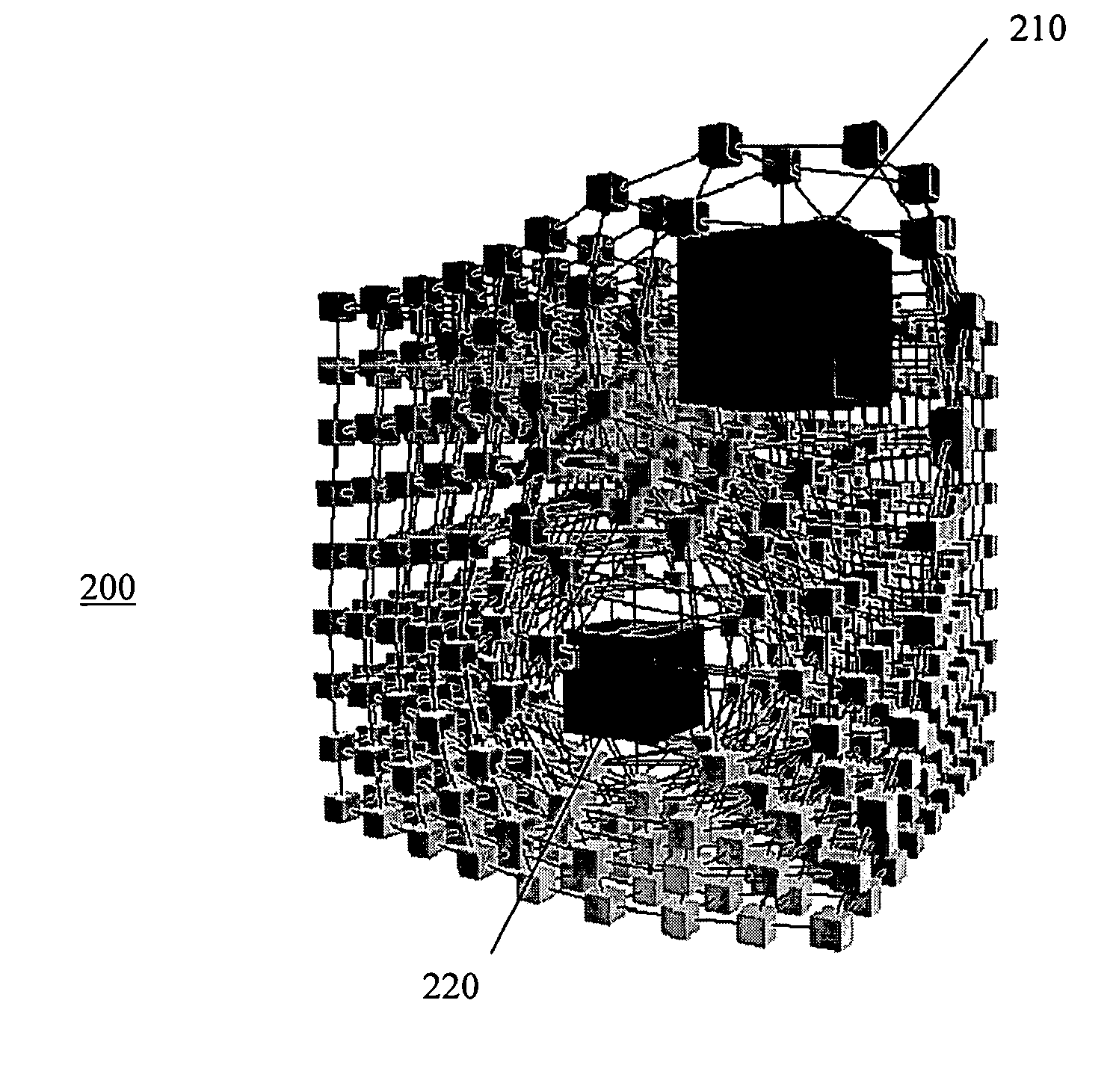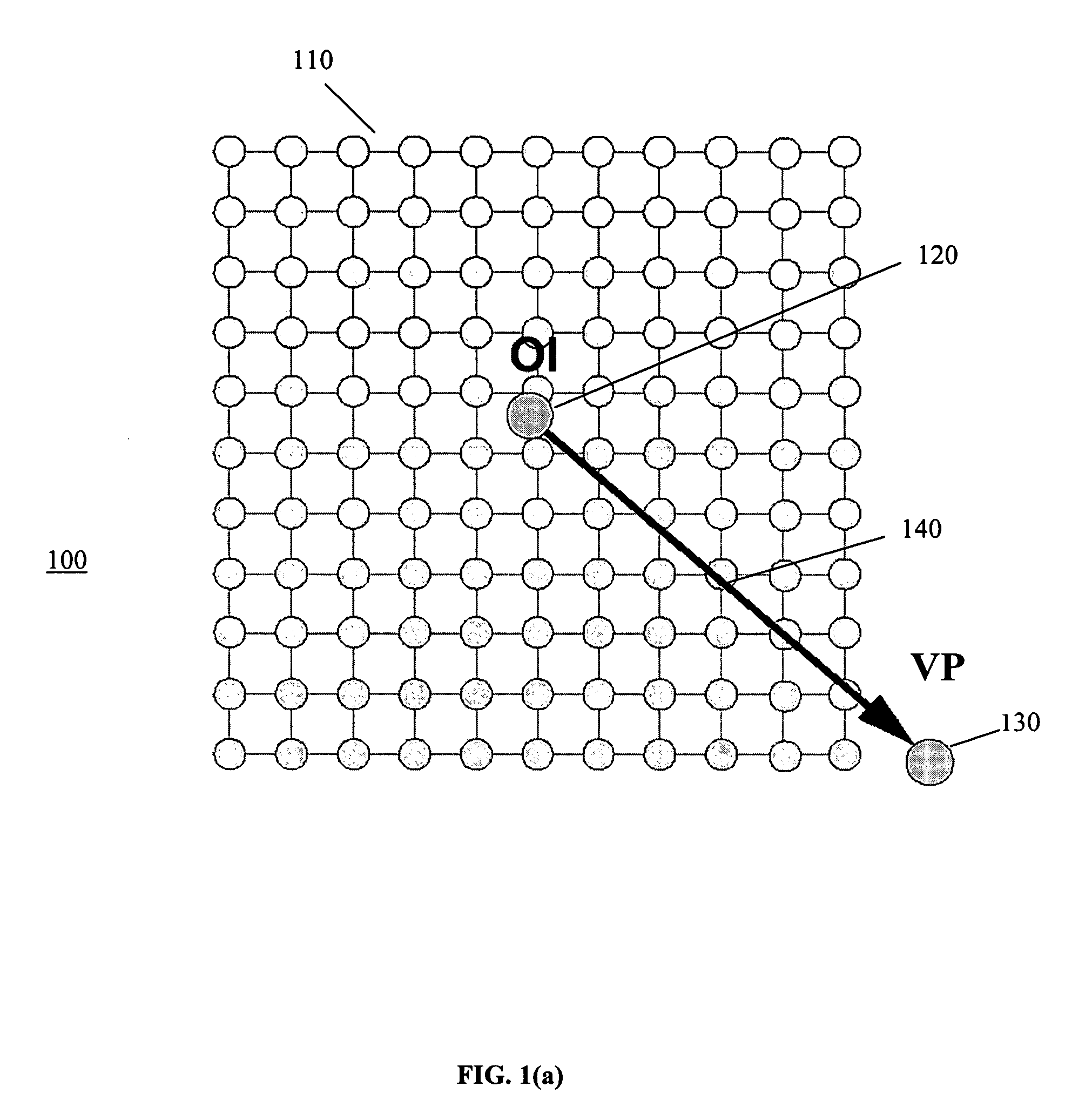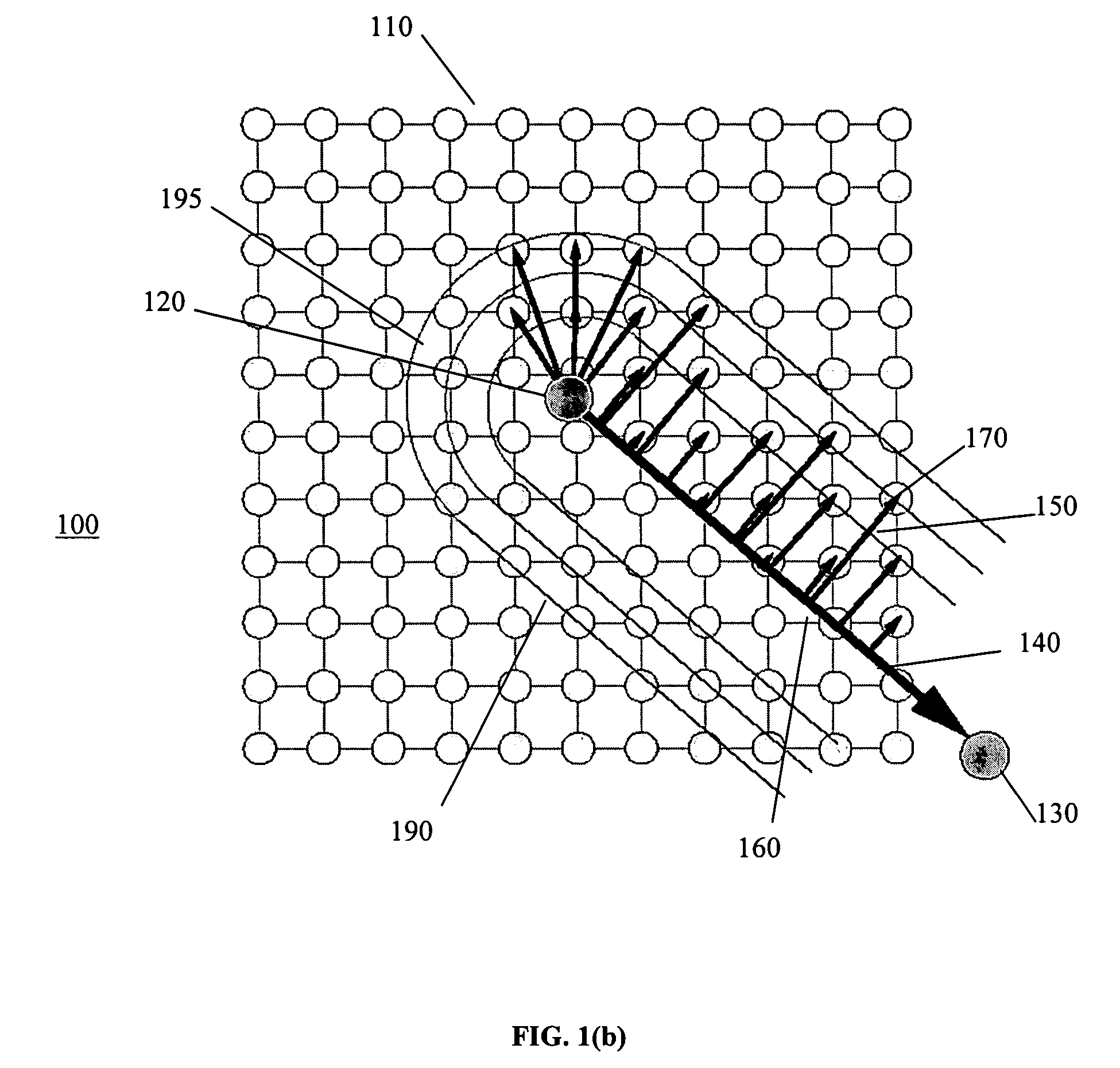Occlusion reducing transformations for three-dimensional detail-in-context viewing
- Summary
- Abstract
- Description
- Claims
- Application Information
AI Technical Summary
Benefits of technology
Problems solved by technology
Method used
Image
Examples
Embodiment Construction
[0139]In the following description, numerous specific details are set forth to provide a thorough understanding of the invention. However, it is understood that the invention may be practiced without these specific details. In other instances, well-known software, circuits, structures and techniques have not been described or shown in detail in order not to obscure the invention. The term data processing system is used herein to refer to any machine for processing data, including the computer systems and network arrangements described herein. In the drawings, like numerals refer to like structures or processes.
[0140]The present invention resolves occlusion of objects in a 3D scene through a layout adjustment method derived from 2D detail-in-context viewing methods. By extension beyond traditional 2D approaches to layout adjustment in 3D, the present invention addresses the specific challenges of occlusion in 3D representations. In doing so the present invention provides a simple yet...
PUM
 Login to View More
Login to View More Abstract
Description
Claims
Application Information
 Login to View More
Login to View More - Generate Ideas
- Intellectual Property
- Life Sciences
- Materials
- Tech Scout
- Unparalleled Data Quality
- Higher Quality Content
- 60% Fewer Hallucinations
Browse by: Latest US Patents, China's latest patents, Technical Efficacy Thesaurus, Application Domain, Technology Topic, Popular Technical Reports.
© 2025 PatSnap. All rights reserved.Legal|Privacy policy|Modern Slavery Act Transparency Statement|Sitemap|About US| Contact US: help@patsnap.com



